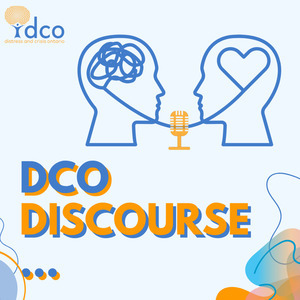Episode 5
Episode 5: Sexual Orientation and Gender Identity
January 24th, 2019
34 mins 44 secs
Season 1
Your Hosts
Tags
About this Episode
The Canadian Community Health Survey 2004 was the first Statistics Canada survey to include a question on sexual orientation. Results indicated that among Canadians aged 18 to 59, 1.0% reported that they considered themselves to be homosexual and 0.7% considered themselves bisexual. The survey indicated that 1.3% of men considered themselves homosexual, about twice the proportion of 0.7% among women. However, 0.9% of women reported being bisexual, slightly higher than the proportion of 0.6% among men. The results are similar to those obtained in the United States using the concept of identity. It is important to know that although there are few such studies, it is expected that these statistics may not be completely reliable. As you will learn in this Learning Forum, there is a wide continuum by which individuals may identify themselves when defining their own sexual orientation. In the presentation by Richard Messier, viewers will not only learn sexual identity and orientation but they will also gain knowledge of the complexities of living with homosexuality, in a predominately heterosexual world. Richard explains currently used terms homosexual individuals may use when describing their sexual orientation as well as detailing the process of coming-out. Richard’s presentation is specifically helpful in making recommendations for Distress Line volunteers in their efforts to support callers who are working through their journey of coming to terms with homosexuality or alternate sexual orientation. Questions for Further Consideration: Do I have preconceived notions about gender identity or sexual orientation that would affect my efforts to support a caller? If yes, it is good to explore these notions, research more, discuss with your volunteer coordinator to help determine what you need to help you work through these issues. Do I use language which may contribute to discrimination against individuals who live an alternative lifestyle, i.e., a different sexual orientation? Pay attention to your words, and others around you. The first step is to become aware that this is an issue; the next step is to make or enforce change and to become sensitive. What are the resources in your community that you can offer to support individuals who are questioning their sexual orientation or needing to develop a network of peers? Review your area community resources; become aware of what is local or at least know how to access such information. In smaller communities you may have to refer to internet sites or larger urban communities nearby. Glossary of Terms: Heterosexuality: Sexual orientation toward people of the opposite-sex; sexual behaviour, impulses, desires, etc., focusing on persons of the opposite - sex; sexual activity between persons of the opposite sex. Homosexuality: Sexual orientation characterized by sexual attraction (love, desire) and formation of romantic relationships with members of one’s own gender. GLBT: Acronym for Gay, Lesbian, Bisexual, Transgender Lesbian: A homosexual female Gay: A homosexual male Bisexual: Noun and adjective for a person romantically attracted to and sexually active with both men and women; sexually oriented toward both sexes; someone whose sexual-orientation is both hetero- and homosexual. Transgender: Refers to a compelling sense that one's gender identity is not in conformity with the psychological characteristics of the sex one is born with. This may lead some to seek gender reassignment. Intersexual: A person born between (inter) sexes, biologically intermediate between male and female. In other words these individuals may have the genitals of one sex, but a gender identity usually associated with the other. For example, a person born with a penis who feels female may identify as transgender. Questioning: Questioning your sexual orientation or being gay curious, is actually common for a lot of teens. Coming out: Refers to openly acknowledging one’s GLBT’s orientation. People often come out in stages; personally identifying as GLBT before sharing this with select individuals and later the larger community. Transsexual: Refers to a person who identifies as a member of the opposite gender. People who are transsexual often want to surgically or hormonally alter their bodies to match their identity. Pre-op transsexuals generally have not had surgery and so have the genitalia of their birth sex. They will usually still live as the opposite sex. Post-op transsexuals have undergone surgery to change their genitals.

